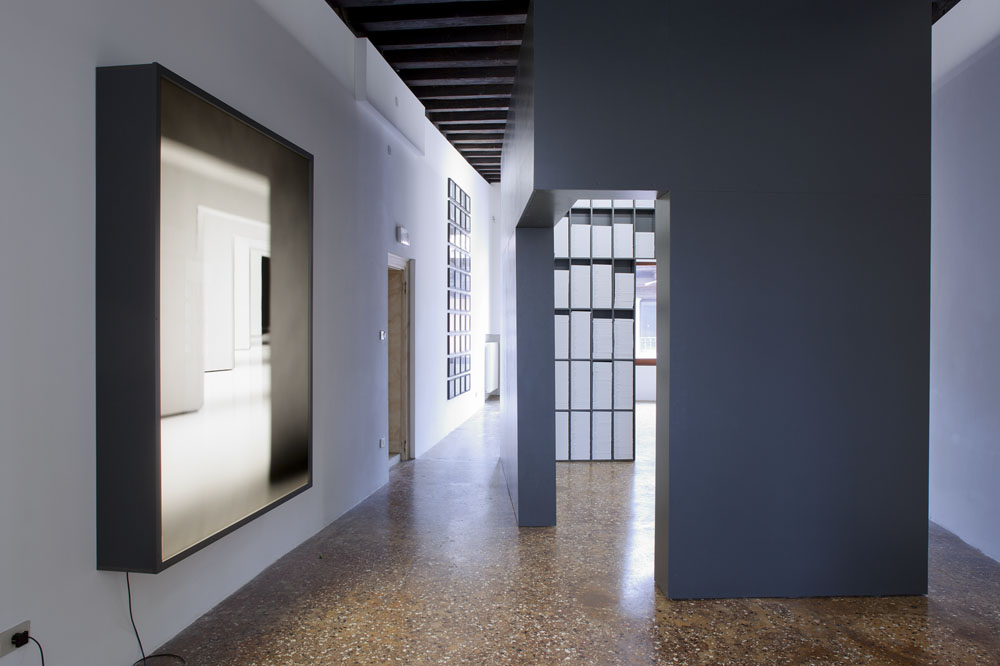
Dénes Farkas with his exhibition Evident in Advance represented Estonia at the 55th Venice Biennale (01.06 – 24.11.2013). The project was made in collaboration with the curator Adam Budak, the Berlin-based architectural bureau Studio Miessen and the London-based graphic designer Zak Group.
Evident in Advance was a continuation of Farkas’s post-conceptual photo-based oeuvre that creates a deeply contemplative space using a minimalist approach. The exhibition curator Adam Budak called Farkas’s umwelten a cartography of failure and dysfunctionality. The exhibition raised a lot of questions about the way language flows through our fingers, the impossibility of using words for translation and the logic of endless re-translation in the seething theatre of words. One of the cornerstones of the project was Bruce Duffy’s novel The World As I Found It (1987) where fiction and reality, real and fake were mixed together and the lives of the three most important 20th century philosophers Ludwig Wittgenstein, Bertrand Russel and G. E. Moore were combined into one story of history, biography and philosophy.
The exhibition was accompanied by a catalogue designed by Zak Group and published by the Sternberg Press.
The exhibition was open from 1 June to 24 November, 2013 in the Palazzo Malipiero. The exhibition was shown again in the Kumu Art Museum in Tallinn (17.01.–11.05.2014).
Exhibition team
Artist Dénes Farkas
Curator Adam Budak
Commissioner Maria Arusoo (CCA)
Architect Studio Miessen
Graphic design Zak Group
Installation Toomas Übner, Ago Märjamaa
Project assistants Rebeka Põldsam (CCA), Maarja Kungla
Assistant of the artist Kulla Laas
The catalogue contained texts by the linguistic philosopher Daniele Monticelli, the writer Bruce Duffy, architects from the Studio Miessen, the philosophers Adriana Cavarero and Maurice Blanchot and the curator and compiler Adam Budak. The leitmotif of the publication was Dénes Farkas’s photographic visual contemplation.